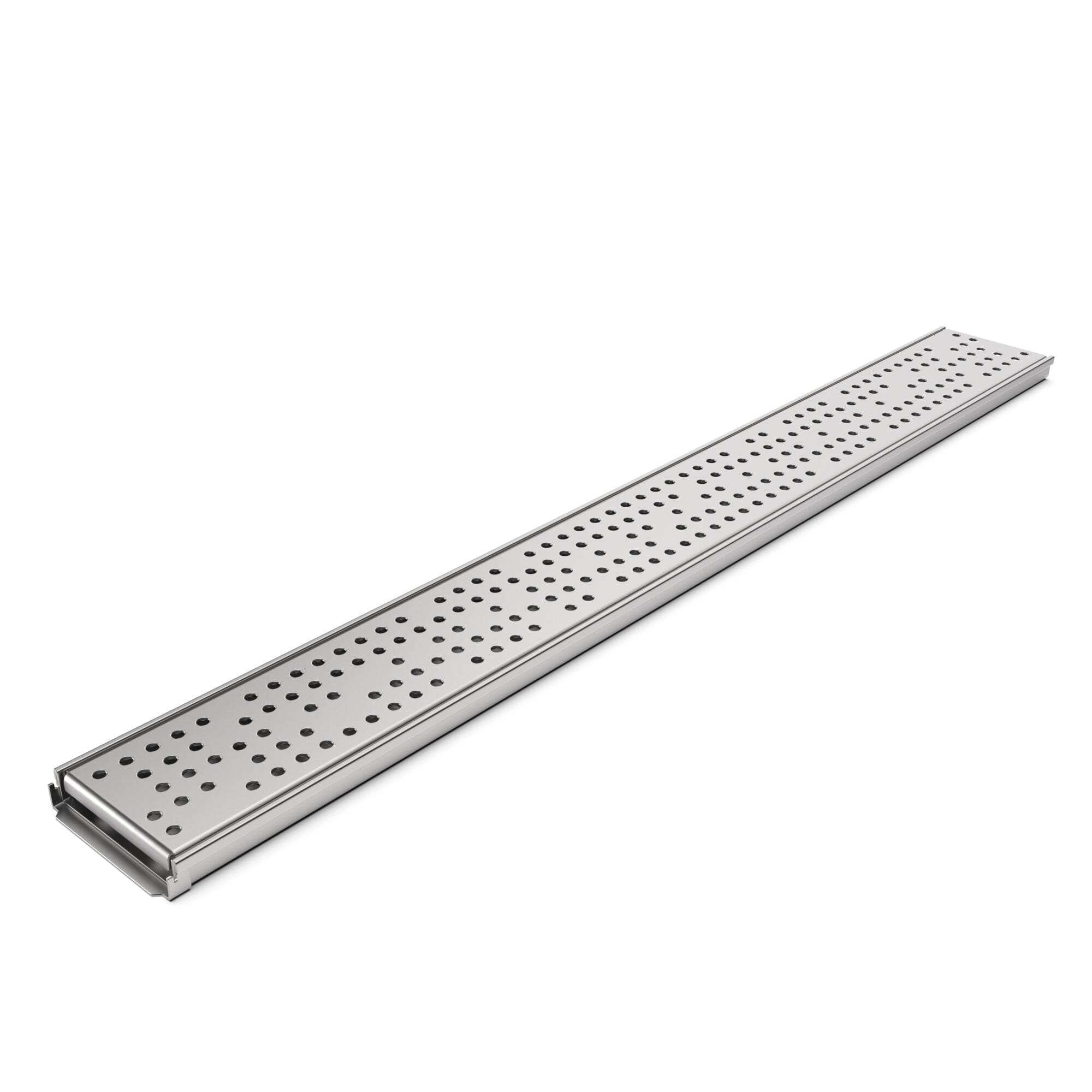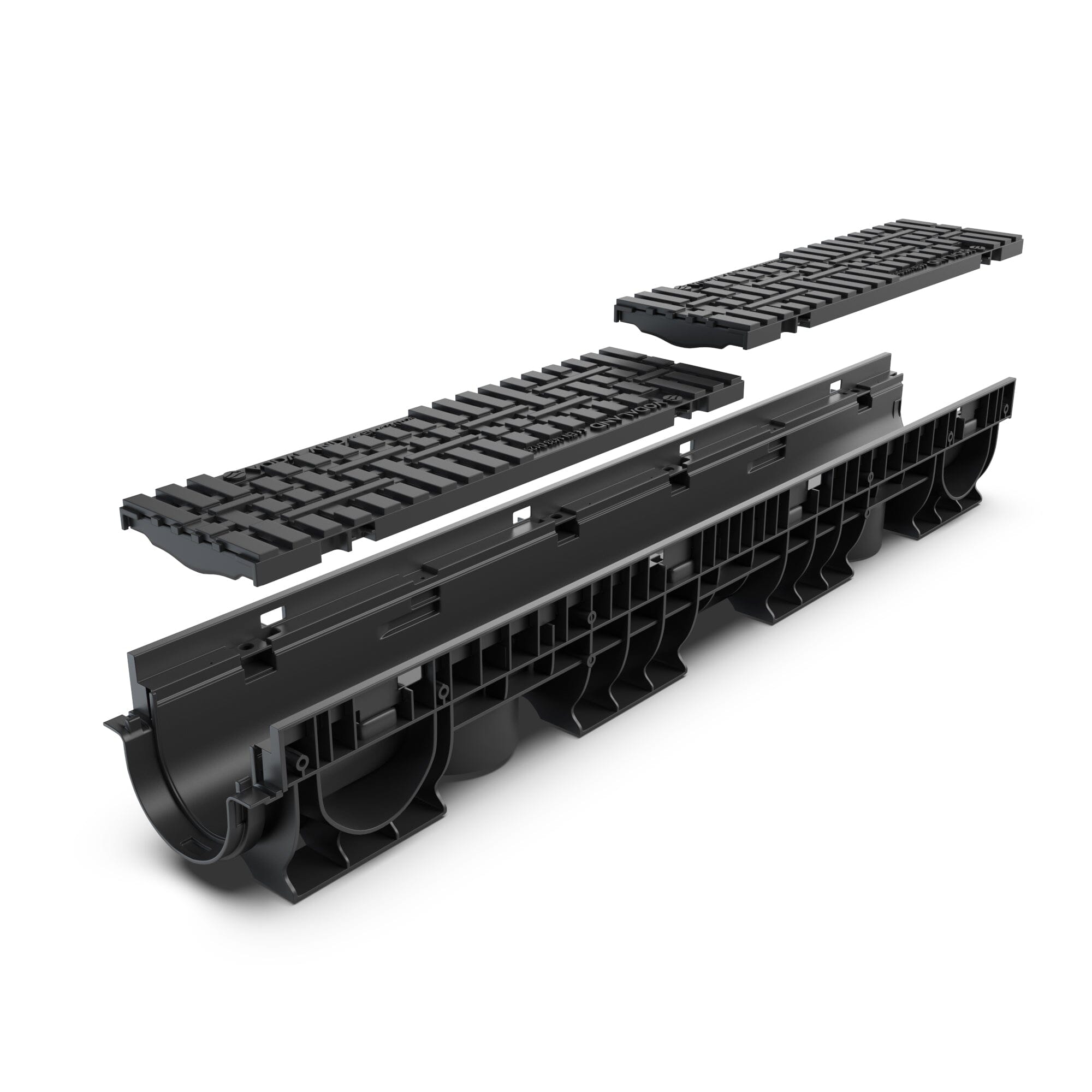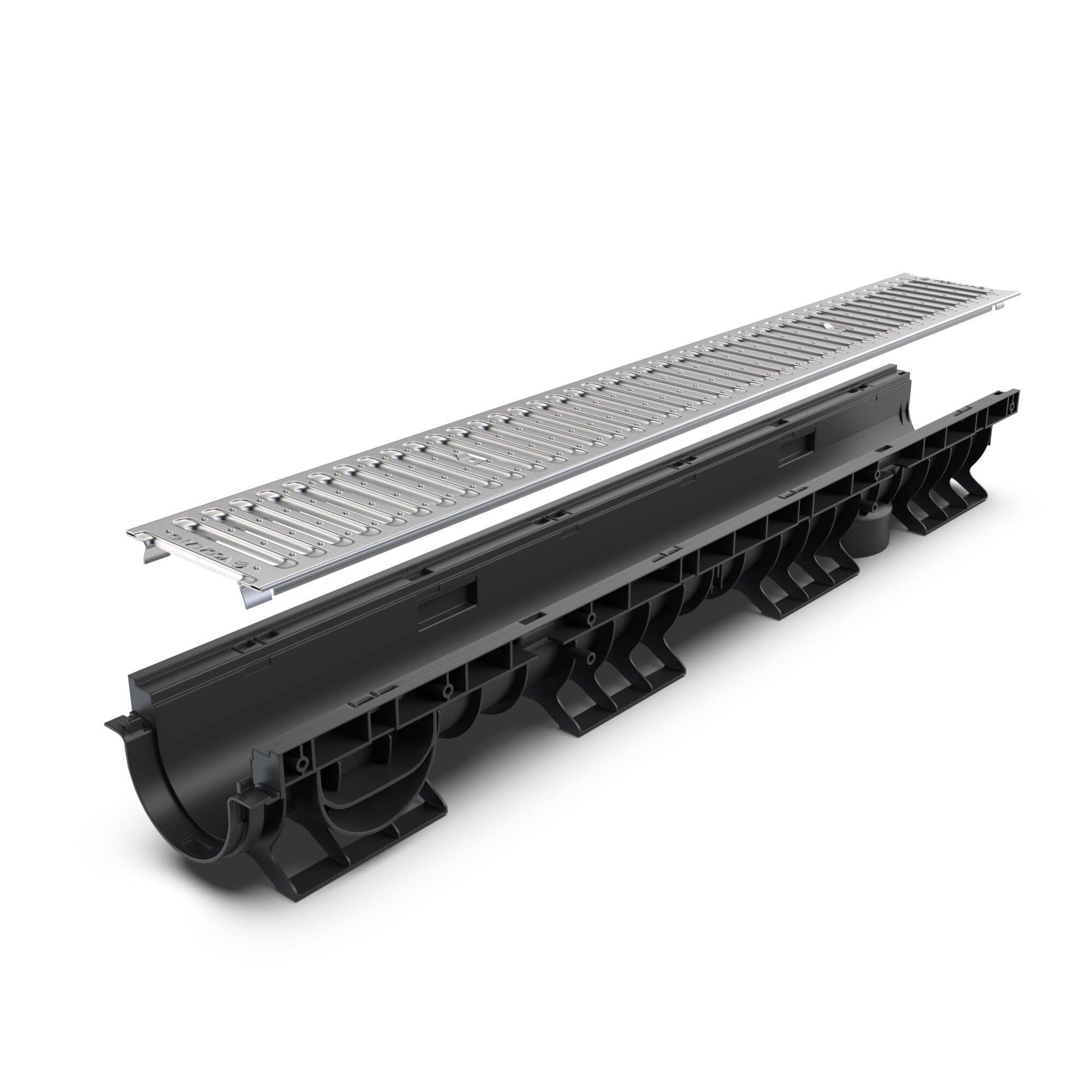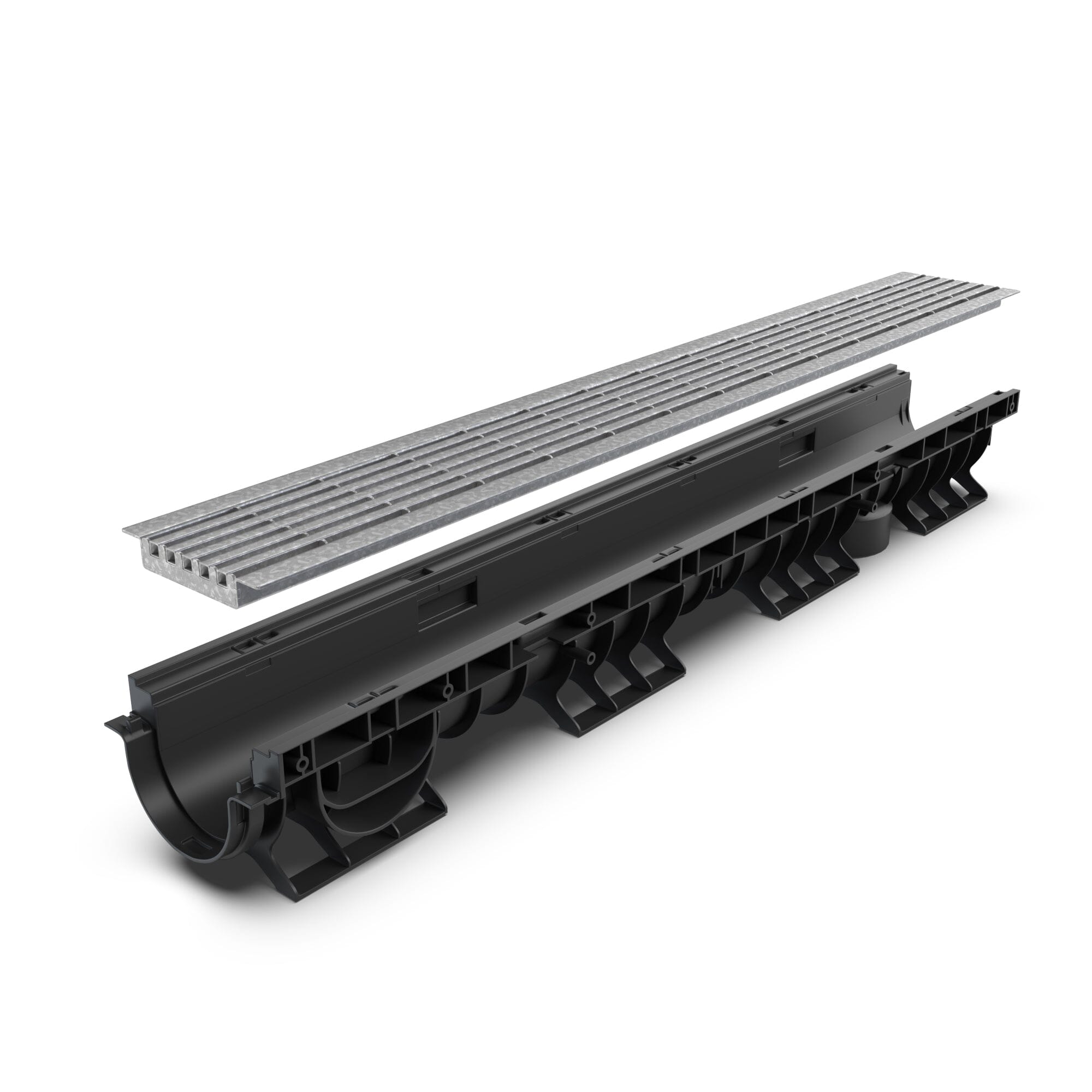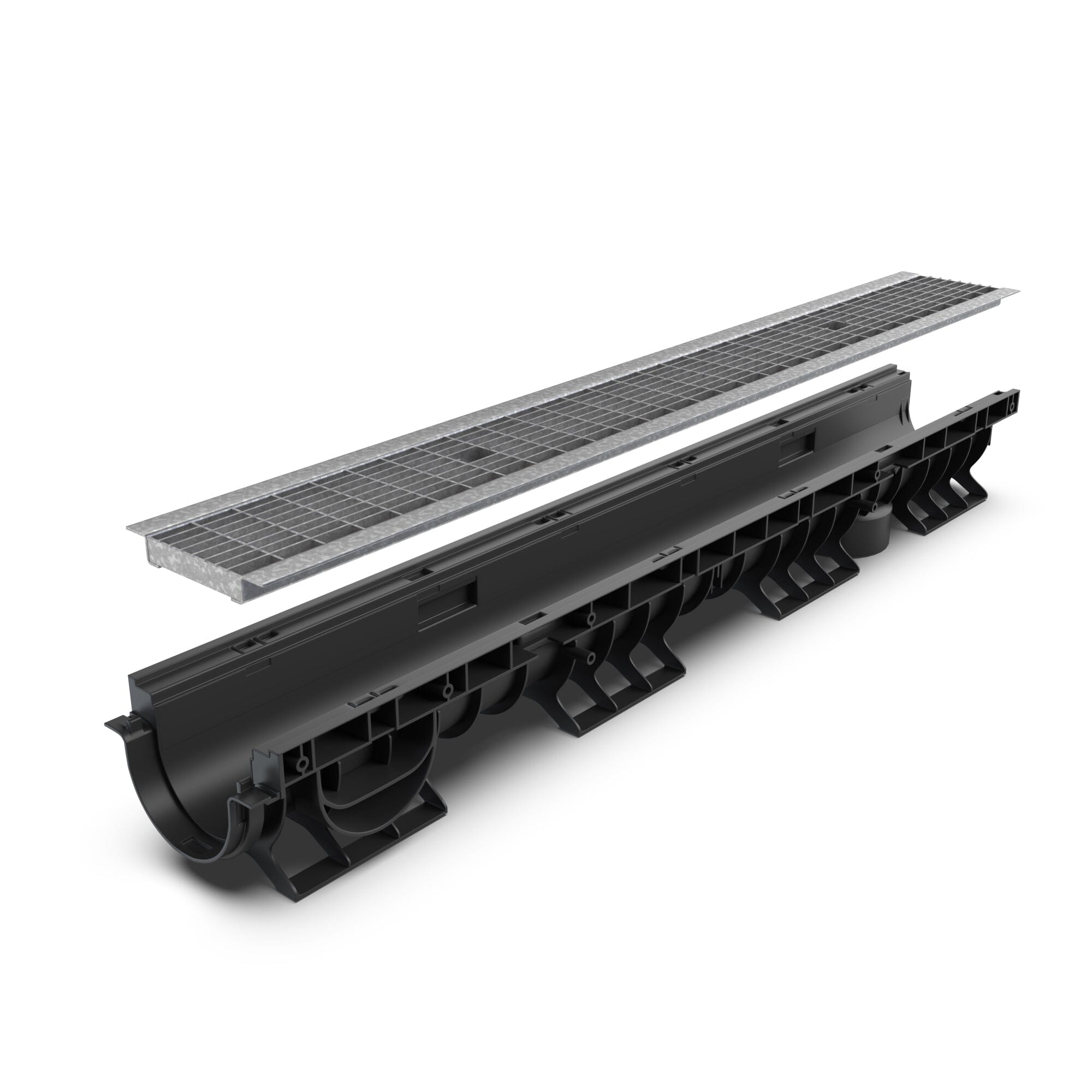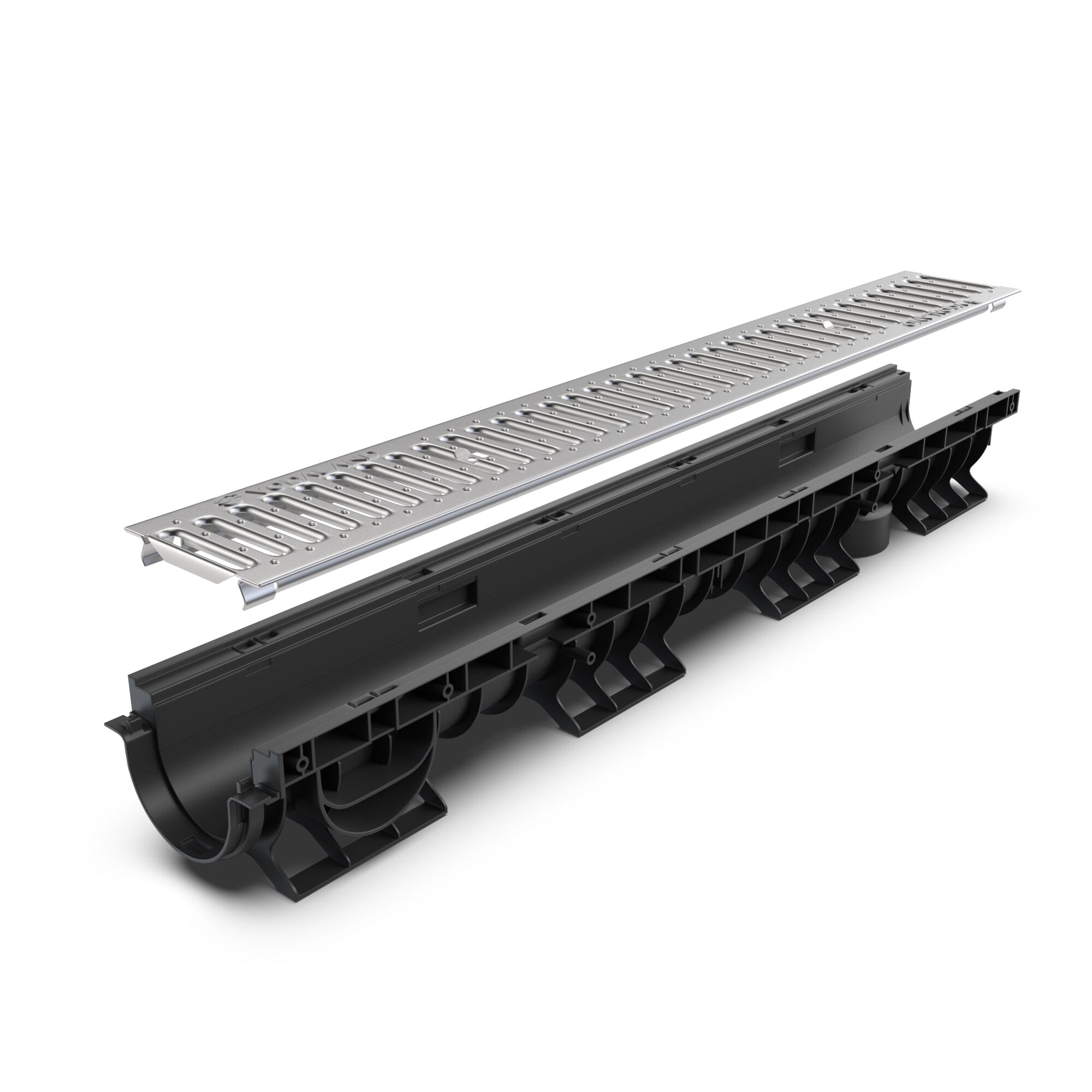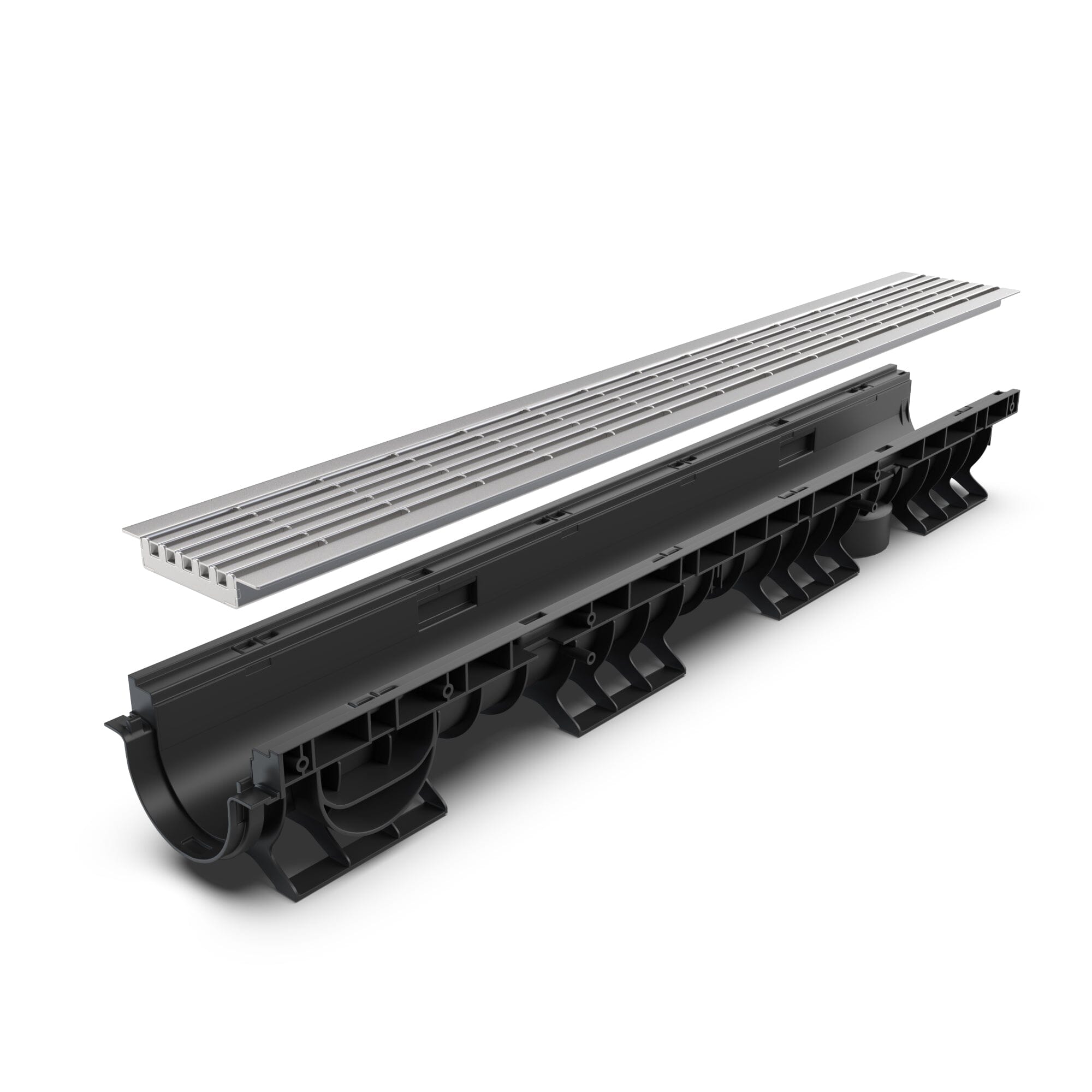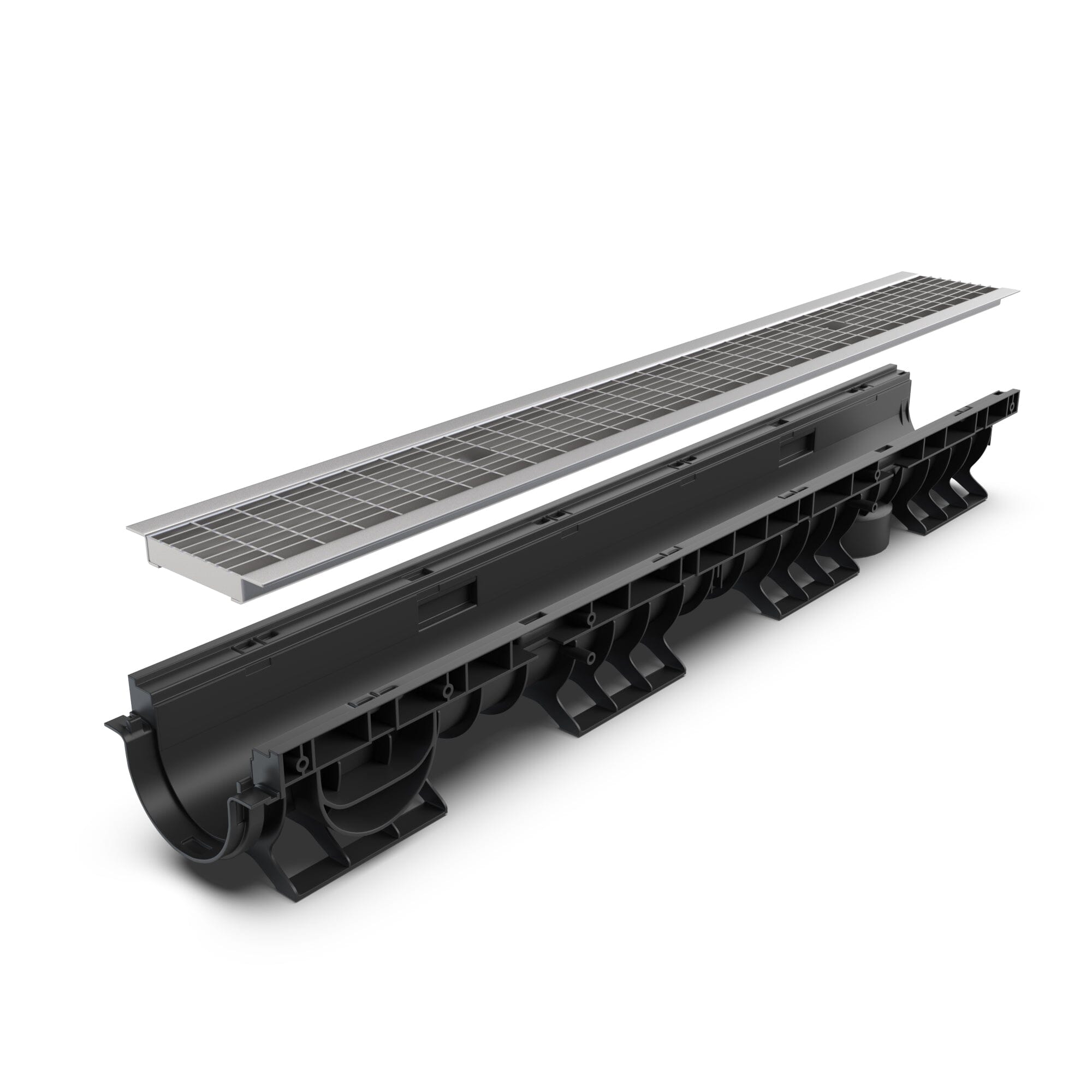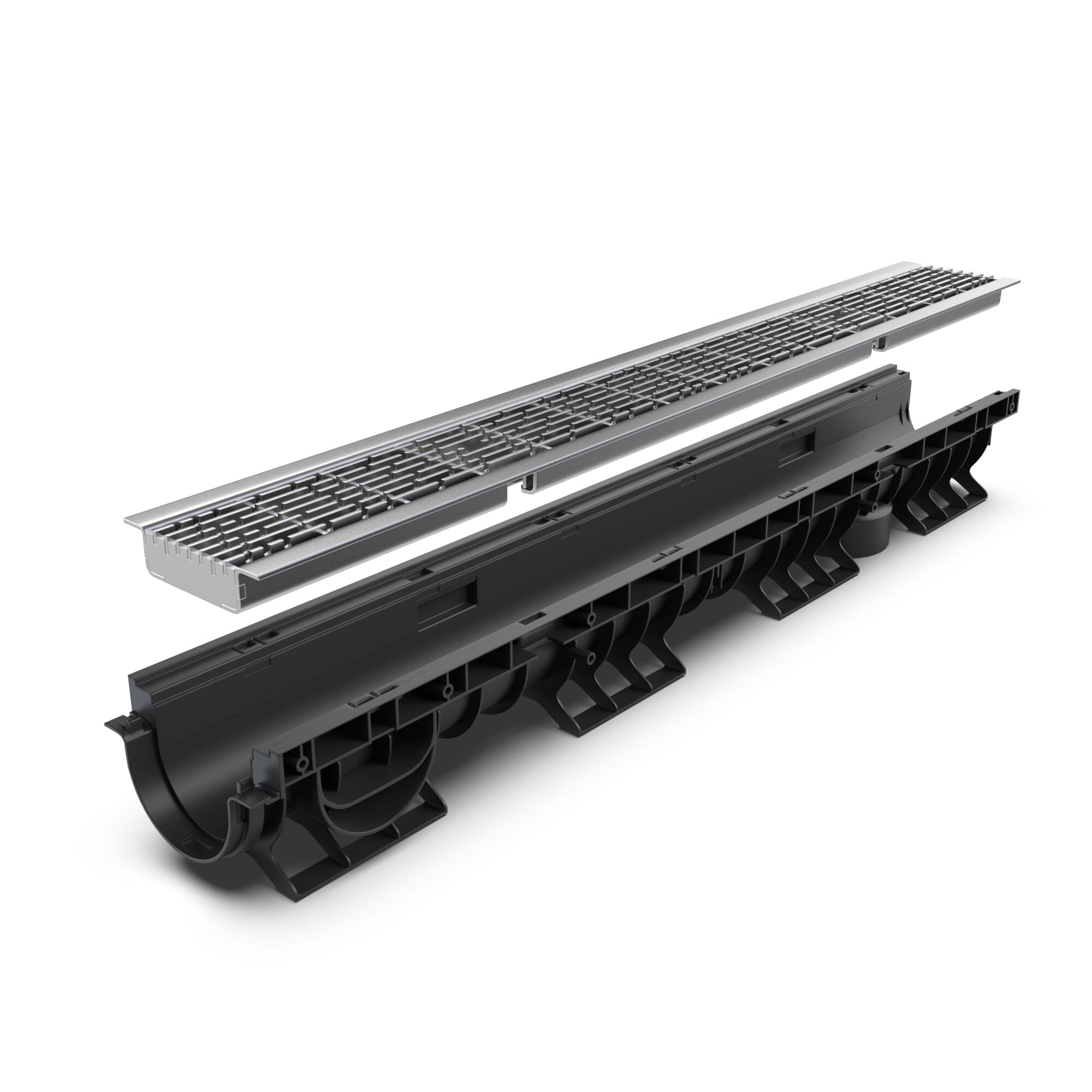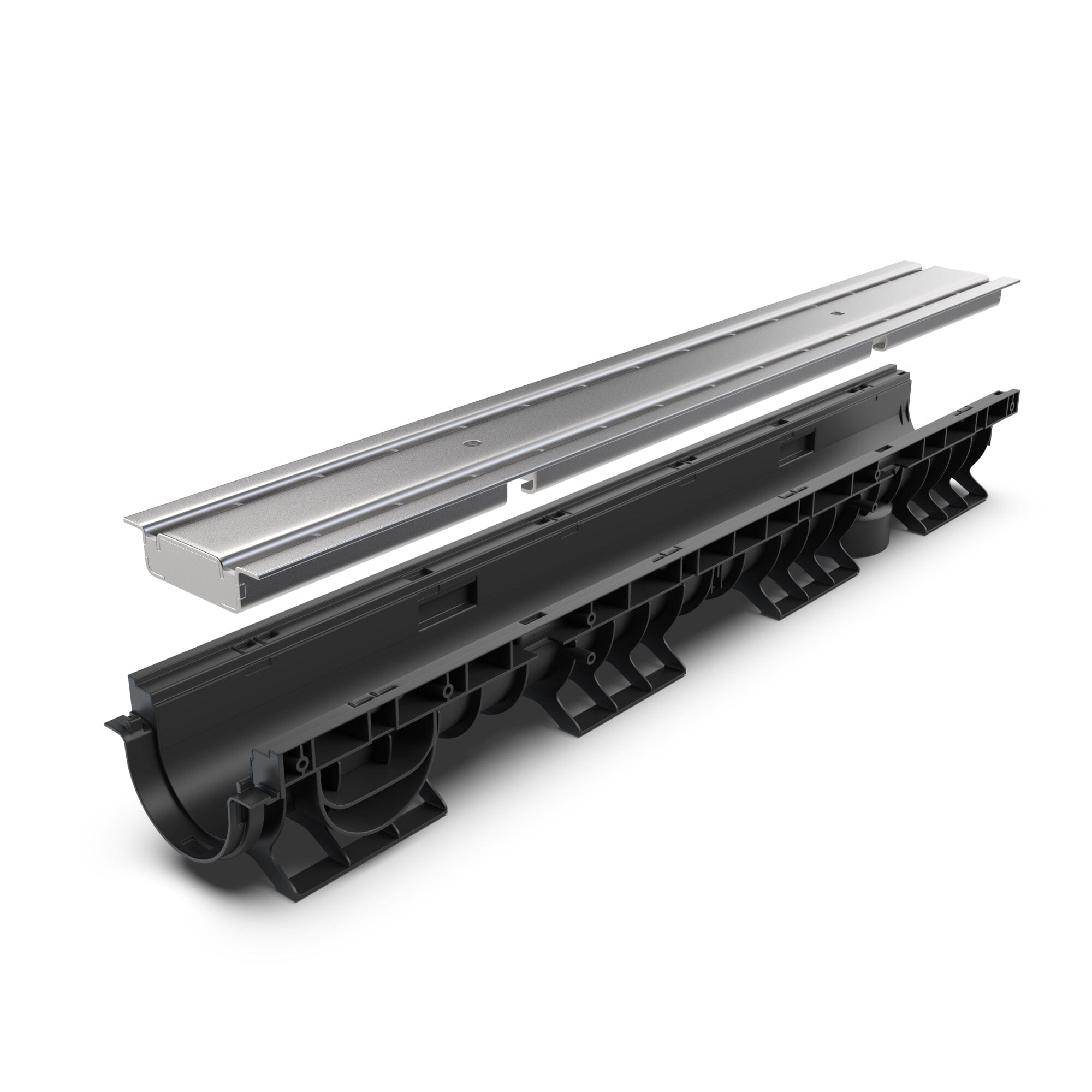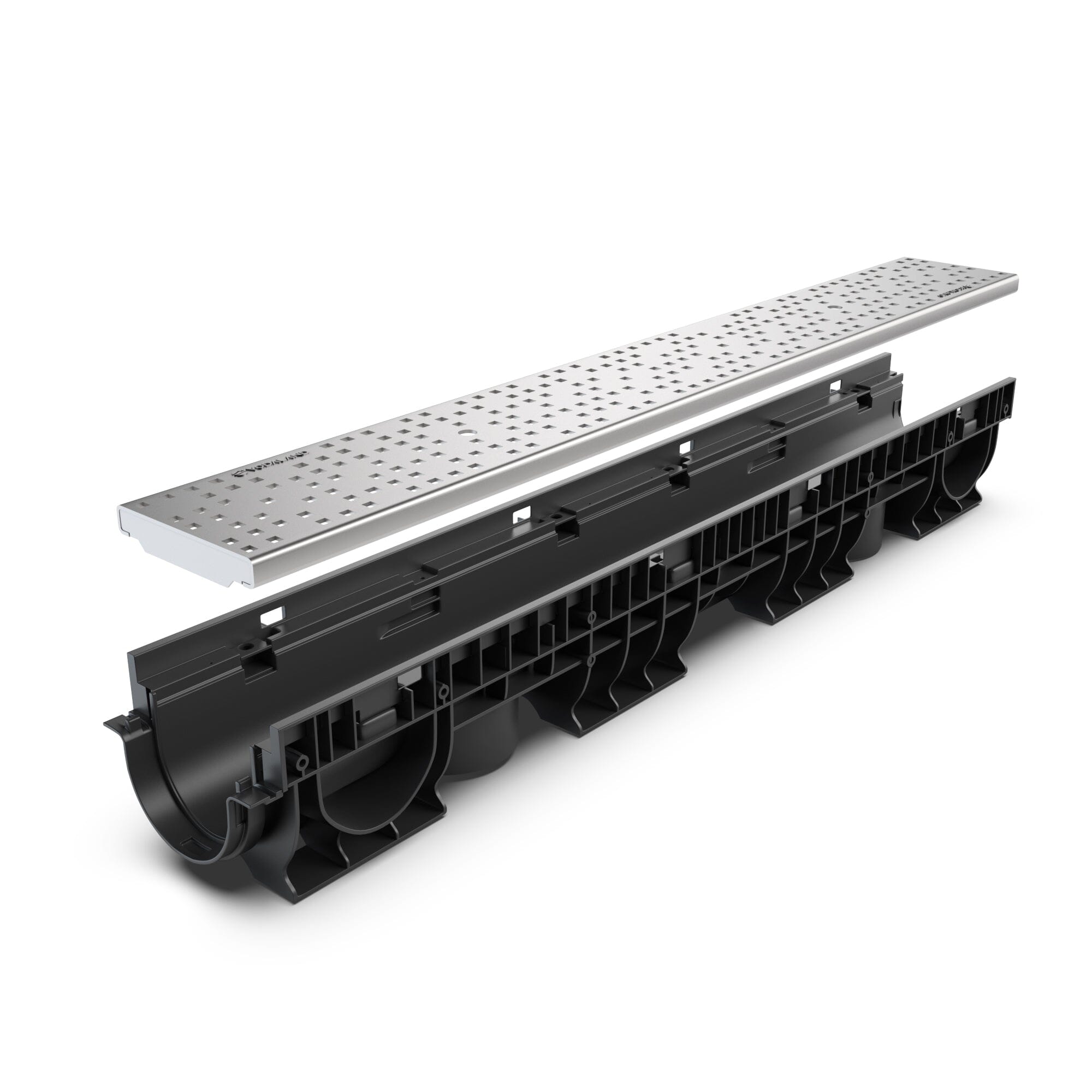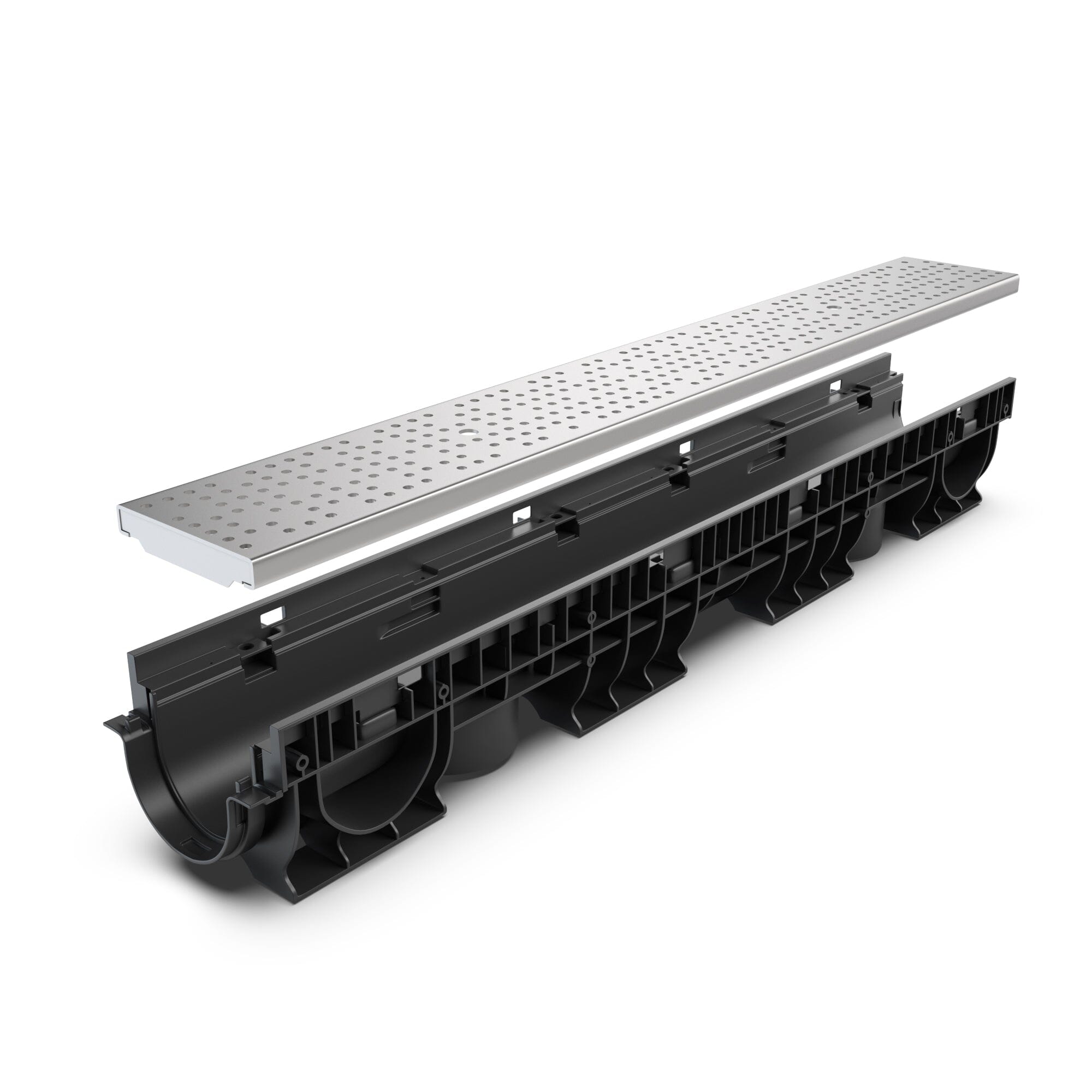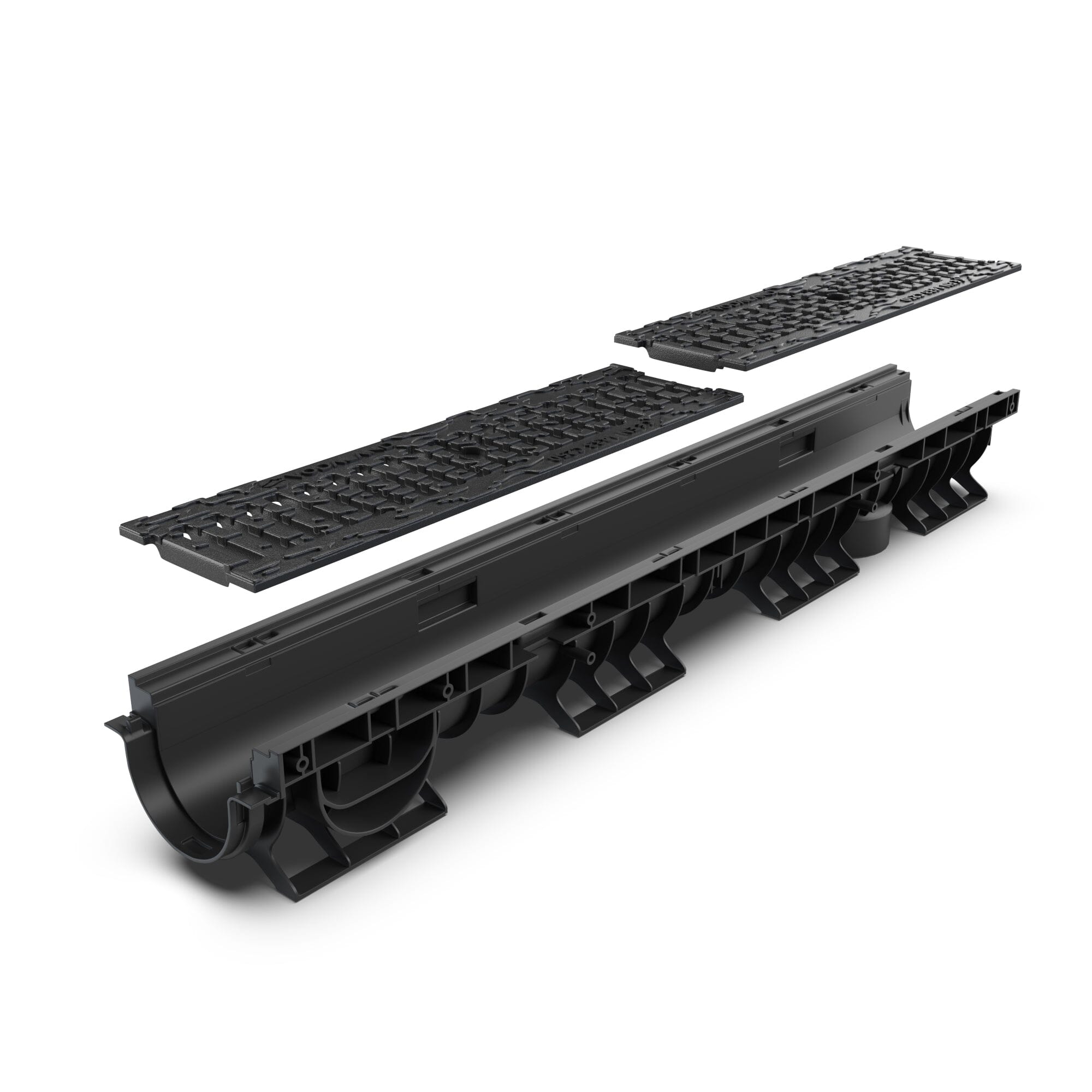
Trench Drains and Trench Drain Systems
Vodaland offers a variety of flexible options for customers looking for trench drain systems. Our trench drains provide a durable and reliable solution for any project. We also offer trench drain systems with stainless steel, galvanized steel, ductile cast iron, and plastic drain grates to fit any need. They also come with end caps, side and bottom outlets, and built-in connections for hassle-free installation. With Vodaland's trench drains, there's no need for adapters or additional parts, making it easy to connect the stainless trench products for a 90-degree connection.
Try our wide range of product offerings, including our popular Dura Slope system. If you need more information about trench drains and catch basins, please feel free to call us at (905) 238-1771.
What are the lengths of each trench drain? How do I know how much to get for my project?
Our trench drain products are highly customizable and flexible for your needs. The trench drain systems can be connected together to form a continuous trench of any length required for your project. In cases where our standard units do not match your required length, most of our trench drains can be cut with the appropriate tools and still provide full functionality. We recommend speaking with a Vodaland employee to confirm that you have the proper tools to cut your trench drain channels to size.
What’s the difference between Easy, Base and Pro trench drains?
Vodaland provides an extensive selection of trench drain systems, classified into the Easy, Base, and Pro product offerings. These trench drains are differentiated based on the load class that they are designed to withstand. The Easy trench drain category is perfect for residential projects that require pedestrian traffic support, while the Base category provides trench drains that meet load classes A-C, making them ideal for projects that involve vehicle traffic and need competitive pricing. The Pro category provides unparalleled durability with features such as ductile iron grates, and metal reinforcing on the channels to support heavy loads. These heavy-duty drains are ideal for commercial projects like highways, warehouses, and factories.
How do I connect trench drains together and how do I connect the piping?
Vodaland designs all trench drain channels, including stainless steel trench drain channels, to be connectable to one another via male-to-female connections. Depending on the model, your trench drain may either click or fit together for connection.
For piping, Vodaland provides plastic channel drain systems with outlet options located on the bottom, sides, and ends. These options vary for each size of the channel, so please review the product drawing for the outlet locations. To connect these outlets to 4” Schedule 40 PVC, we sell additional adapters. For other types of piping, we recommend using external rubber couplings to connect them to the outlets. Simply take your pipe size and outlet size to your local hardware store, and they should provide you with the appropriate coupling.
What load class do I need for my project?
Vodaland offers a wide range of trench drains and grate options in different materials suitable for any load class requirement. To ensure that the load class of your chosen product is appropriate for your project, please visit this link to learn more: https://vodaland.ca/pages/load-classes.
Where can I find pre-sloped channels?
Vodaland has just released their new pre-slope polypropylene trench drain system which will allow for 1% pre-slope up to 13m in length. We as well offer our special-order concrete channel drains in 0.5% and 1% pre-slope. If you require a pre-slope trench drain floor plan, contact a Vodaland representative for assistance.
Load Class A - Light duty, pedestrian foot traffic
Load Class B - Medium duty traffic, light vehicles, sidewalks and residential parking
Load Class C - Heavy duty traffic, buses, garages, general commercial applications
Load Class D - Heavy duty trucks, gas stations, forklifts, highways
Load Class E - Extra heavy duty, hard tire forklifts, industrial areas, storage terminals
Load Class F - Special duty, airport runways, structures with extreme loads
What is trench drain?
A linear drainage system, also known as a trench drain system, is designed to efficiently move storm waters and surface water from one place to another. The use of stainless steel trench drains ensures corrosion resistance and longevity of the system, making it ideal for various commercial and industrial applications such as manufacturing plants and food processing.
One of the main points to consider when you design your trench drain system is a Load Class. Load classes can vary widely and depend on the load that will be applied to a trench drain. Below is a list of load classes:
A class (pedestrian, bicycles, carts, etc.)
B class (light vehicles, cars)
C class (commercial vehicles)
D class (heavy-duty machinery)
E class (extra-heavy duty machinery and equipment)
F class (airport's traffic)
Another point to consider is the amount of water that has to be removed from the area. This is regulated by the width and depth of a trench drain channel. Feel free to call us if you need more details on this.
How are Vodaland's trench drains different?
Our channel drains provide customers with flexible options to fit their specific project's needs. We offer stainless steel, galvanized steel, ductile cast iron and plastic grate options for out trench drains. Our channels come with end caps, side, and bottom outlets. No adapters or additional parts are needed for a 90-degree connection. Our trench drain grates are interchangeable, made of different materials and may be replaced and changed at any time when you upgrade your drainage system or for maintenance and cleaning purposes. All of the above will save you time during the installation and make the process smooth and easy.
Stainless Balcony & Deck trench drain
- Regular price
- from $270.00
- Regular price
-
- Sale price
- from $270.00
- Unit price
- /per
From $270.00
3" EASY 1 plastic trench drain, plastic grate
- Regular price
- from $44.00
- Regular price
-
- Sale price
- from $44.00
- Unit price
- /per
From $44.00
3" EASY 1 plastic trench drain, galvanized grate
- Regular price
- from $45.00
- Regular price
-
- Sale price
- from $45.00
- Unit price
- /per
From $45.00
3" EASY 1 plastic trench drain, stainless grate
- Regular price
- from $80.00
- Regular price
-
- Sale price
- from $80.00
- Unit price
- /per
From $80.00
4" EASY 2 plastic trench drain, plastic grate (light gray)
- Regular price
- from $56.00
- Regular price
-
- Sale price
- from $56.00
- Unit price
- /per
From $56.00
4" EASY 2 plastic trench drain, plastic grate (dark gray)
- Regular price
- from $56.00
- Regular price
-
- Sale price
- from $56.00
- Unit price
- /per
From $56.00
4" EASY 2 plastic trench drain, ductile cast iron grate
- Regular price
- from $56.00
- Regular price
-
- Sale price
- from $56.00
- Unit price
- /per
From $56.00
4" EASY 2 plastic trench drain, plastic grate (green)
- Regular price
- from $56.00
- Regular price
-
- Sale price
- from $56.00
- Unit price
- /per
From $56.00
4" EASY 2 plastic trench drain, galvanized grate
- Regular price
- from $56.00
- Regular price
-
- Sale price
- from $56.00
- Unit price
- /per
From $56.00
SALE
4" EASY 2 plastic trench drain, plastic grate (black)
- Regular price
- from $50.00
- Regular price
-
$56.00 - Sale price
- from $50.00
- Unit price
- /per
From $50.00
4" EASY 2 plastic trench drain, stainless grate
- Regular price
- from $92.00
- Regular price
-
- Sale price
- from $92.00
- Unit price
- /per
From $92.00
4" Plastic high-edge trench drain (BASE 100P-HE), plastic grate ADA, B Class
- Regular price
- from $130.00
- Regular price
-
- Sale price
- from $130.00
- Unit price
- /per
From $130.00
4" Plastic trench drain (BASE 100P), galvanized grate, A Class
- Regular price
- from $102.00
- Regular price
-
- Sale price
- from $102.00
- Unit price
- /per
From $102.00
4" Plastic trench drain (BASE 100P), galvanized grate ADA/Heel Proof, A Class
- Regular price
- from $210.00
- Regular price
-
$0.00 - Sale price
- from $210.00
- Unit price
- /per
From $210.00
4" Plastic trench drain (BASE 100P), galvanized grate ADA, B class
- Regular price
- from $184.00
- Regular price
-
- Sale price
- from $184.00
- Unit price
- /per
From $184.00
4" Plastic trench drain (BASE 100P), stainless grate, A Class
- Regular price
- from $160.00
- Regular price
-
- Sale price
- from $160.00
- Unit price
- /per
From $160.00
4" Plastic trench drain (BASE 100P), stainless grate Heel Proof, A Class
- Regular price
- from $255.00
- Regular price
-
- Sale price
- from $255.00
- Unit price
- /per
From $255.00
4" Plastic trench drain (BASE 100P), stainless grate ADA, B class
- Regular price
- from $400.00
- Regular price
-
- Sale price
- from $400.00
- Unit price
- /per
From $400.00
4" Plastic trench drain (BASE 100P), stainless grate "no-slip", B class
- Regular price
- from $400.00
- Regular price
-
- Sale price
- from $400.00
- Unit price
- /per
From $400.00
4" Plastic trench drain (BASE 100P) stainless grate "double-slotted", B class
- Regular price
- from $400.00
- Regular price
-
- Sale price
- from $400.00
- Unit price
- /per
From $400.00
4" Plastic high-edge trench drain (BASE 100P-HE), stainless grate perforated (square holes), B Class
- Regular price
- from $460.00
- Regular price
-
- Sale price
- from $460.00
- Unit price
- /per
From $460.00
4" Plastic high-edge trench drain (BASE 100P-HE), stainless grate perforated (round holes), C Class
- Regular price
- from $520.00
- Regular price
-
- Sale price
- from $520.00
- Unit price
- /per
From $520.00
4" Plastic trench drain (BASE 100P), ductile cast iron grate "terrain", C class
- Regular price
- from $162.00
- Regular price
-
- Sale price
- from $162.00
- Unit price
- /per
From $162.00
4" Plastic trench drain (BASE 100P), ductile cast iron grate ADA/Heelproof, C class
- Regular price
- from $192.00
- Regular price
-
- Sale price
- from $192.00
- Unit price
- /per
From $192.00
- Page 1 of 3
- Next page
Call for more information or to place an order!
Our customer service squad and sales team are always here to help.
(905) 238-1771FAQ’s
Let's figure out how many channels you need.
Lets figure out the sq ft of your project.
Remember to round up for the sq ft packages. We recommend purchasing 10% overage of your square footage to ensure dimensions are matched.
Lets see how many geo grids you will need for your project.
Remember, sometimes its good to add another additional unit to your order if you are making cuts or trims in your installation!
- Choosing a selection results in a full page refresh.
- Press the space key then arrow keys to make a selection.



